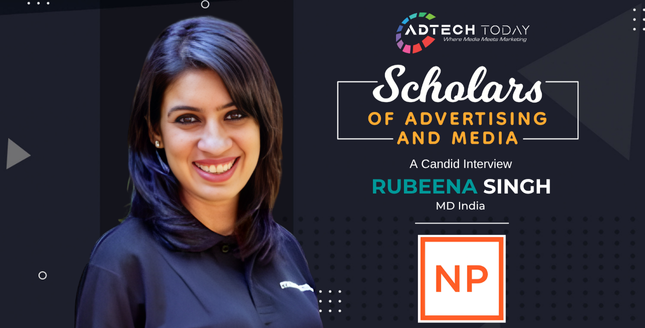

India’s digital ecosystem has entered a phase where strategic clarity, integrated thinking, and measurable impact matter more than scale alone. As brands navigate a fragmented landscape shaped by AI, automation, and evolving consumer behavior, leaders who can unify creativity with performance stand out.
Rubeena Singh, Managing Director of NP Digital India, brings over two decades of experience across print, television, digital, and performance marketing. She has led high-growth mandates at iProspect, Moneycontrol, Josh, and AnyMind Group, where she expanded operations across the UAE and Saudi Arabia while diversifying into new markets. At NP Digital India, she drives integrated “One Search” strategies, aligning brand, organic, and paid marketing to deliver full-funnel impact. In this conversation, she reflects on the future of marketing, the evolution of search, and the leadership mindset needed to thrive in a rapidly changing digital landscape.
1. You’ve worked across print, television, digital, and performance marketing. How has this cross-media experience shaped your perspective on what makes marketing truly effective today?
My cross-media background has taught me that connection is key, no matter the channel. Star India taught me emotional storytelling, while Moneycontrol (Network18) showed me that digital thrives on utility and direct user value.
This has crystallized my perspective that the whole “brand vs. performance” debate is obsolete.
“True effectiveness today requires unifying the entire customer journey.”
And that is the driving force behind our “One Search” approach at NPDI, which tries to get paid, organic, and brand strategies to work in unison across fragmented touchpoints.
When you first moved from traditional to digital, what were some turning points or realizations that helped you adapt and stay ahead of change?
The biggest realization was the philosophical shift from a “push” to a “pull” model. Traditional media broadcasts. Digital wants you to be discoverable when users seek answers. This inversion makes immediate data and accountability essential.
My time as CEO of iProspect underscored that in the agency world, the market swiftly punishes hesitation. To stay ahead, you have to build institutionalized curiosity into your operating model. In my current role as MD at NP Digital India, we are always unlearning, learning, getting trained on, and testing emerging technologies.
Your experience spans both creative and performance-driven marketing. How do you approach blending data-led precision with emotional storytelling to deliver real impact?
I don’t view both of them in isolation. Today, you can’t see them as separate forces to be “blended”. They are a single integrated process. My background in statistics and media has helped me to craft a journey where data provides the map, and creativity makes the journey memorable.
“Data tells you who you’re talking to, where they are, and what they need. But it’s creativity that answers why they should care.”
At NP Digital, we bring this to life. Our proprietary platforms are built on this philosophy, they fuse data-driven insights with creative execution from the very beginning. You can’t just reconcile them at the end. Creativity must be informed by data from inception.
The marketing ecosystem is evolving rapidly, with automation and AI reshaping every layer. In your view, what are the biggest advantages and potential blind spots of this shift?
The advantages are clear: Precision targeting, predictive analytics, and personalization at scale. We are deploying AI across the entire funnel to free up marketers for strategic thinking.
However, I see three critical blind spots. First, optimization bias. AI favours what’s easily measured over long-term brand equity. Second, the risk of homogenization, as similar tools create similar outputs. Third, the trust paradox; this is something Hyper-personalization, if handled badly, can quickly feel intrusive. Our mandate is clear: Technology must augment human intuition, not replace critical thinking.
You’ve led teams through periods of rapid growth and transformation. What have been some key leadership lessons about nurturing talent and driving collaboration in such a dynamic space?
Leading teams through rapid change has taught me that transparency, even in ambiguity, builds resilience.
“People need the “why” behind decisions, not just the “what.”
My approach rests on three pillars. First, building psychological safety. This is essential for the experimentation and calculated risk-taking that innovation demands. Second, modeling collaboration where silos have to be broken at the leadership level first. Third, institutionalizing curiosity. Continuous learning is a core job requirement. Ultimately, you must nurture your talent, because operational excellence and client satisfaction are a direct result of a resilient and engaged team.
As you look ahead, what excites you most about the next phase of your journey — are there specific areas within marketing or digital innovation that you’re keen to explore further?
I am most excited by the evolution of search and the fragmentation of consumer discovery. Search has gone from a box on a single website to appearing in AI overviews, within social platforms, and through chatbots. This raises entirely new architectural questions for brands.
This, combined with the closed-loop measurement of retail media, is shifting the entire landscape. At NP Digital we are actively developing our “One Search” strategies to address this, recognizing that search is now ubiquitous.